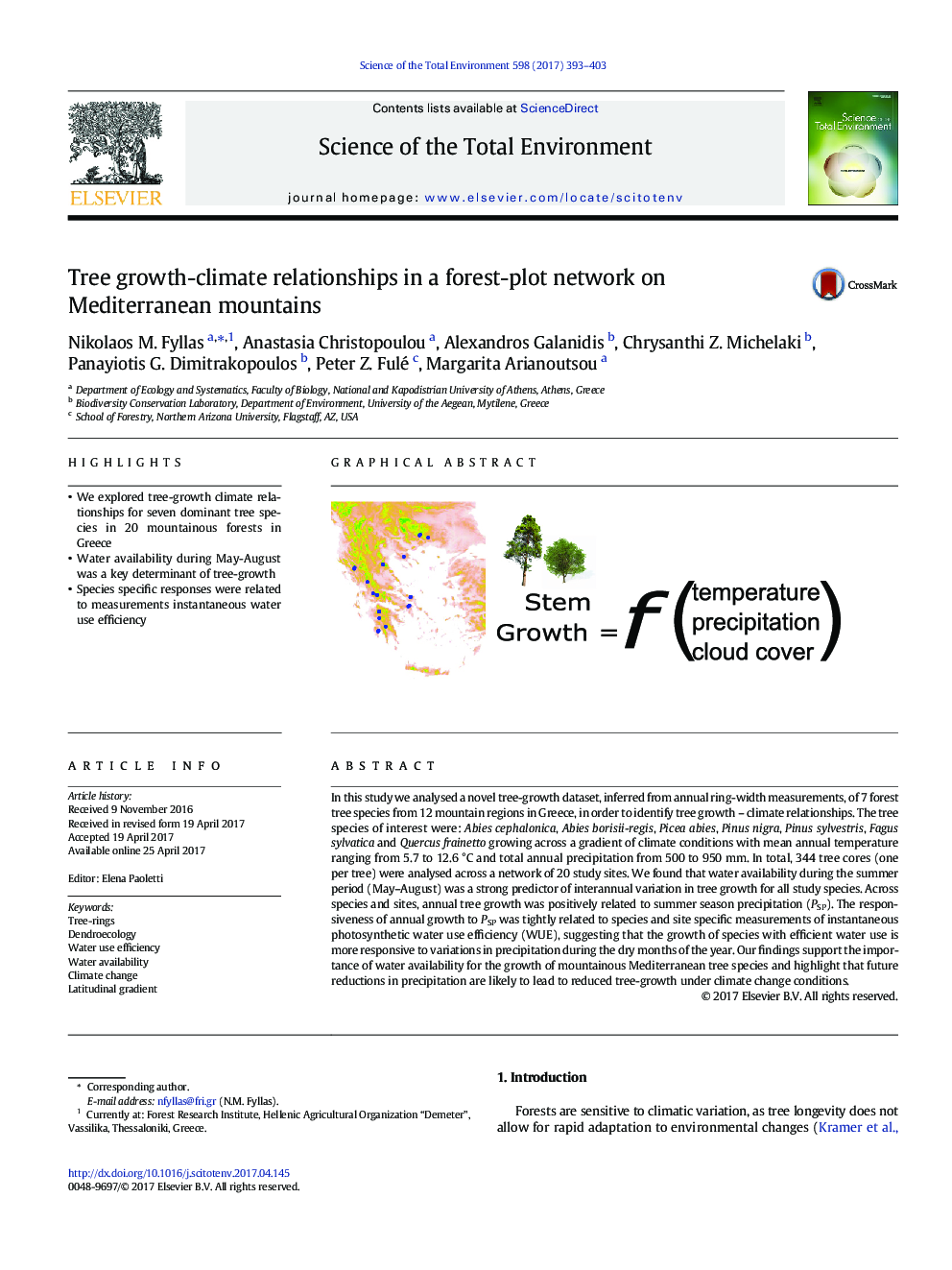| Article ID | Journal | Published Year | Pages | File Type |
|---|---|---|---|---|
| 5750954 | Science of The Total Environment | 2017 | 11 Pages |
â¢We explored tree-growth climate relationships for seven dominant tree species in 20 mountainous forests in Greeceâ¢Water availability during May-August was a key determinant of tree-growthâ¢Species specific responses were related to measurements instantaneous water use efficiency
In this study we analysed a novel tree-growth dataset, inferred from annual ring-width measurements, of 7 forest tree species from 12 mountain regions in Greece, in order to identify tree growth - climate relationships. The tree species of interest were: Abies cephalonica, Abies borisii-regis, Picea abies, Pinus nigra, Pinus sylvestris, Fagus sylvatica and Quercus frainetto growing across a gradient of climate conditions with mean annual temperature ranging from 5.7 to 12.6 °C and total annual precipitation from 500 to 950 mm. In total, 344 tree cores (one per tree) were analysed across a network of 20 study sites. We found that water availability during the summer period (May-August) was a strong predictor of interannual variation in tree growth for all study species. Across species and sites, annual tree growth was positively related to summer season precipitation (PSP). The responsiveness of annual growth to PSP was tightly related to species and site specific measurements of instantaneous photosynthetic water use efficiency (WUE), suggesting that the growth of species with efficient water use is more responsive to variations in precipitation during the dry months of the year. Our findings support the importance of water availability for the growth of mountainous Mediterranean tree species and highlight that future reductions in precipitation are likely to lead to reduced tree-growth under climate change conditions.
Graphical abstractDownload high-res image (234KB)Download full-size image
